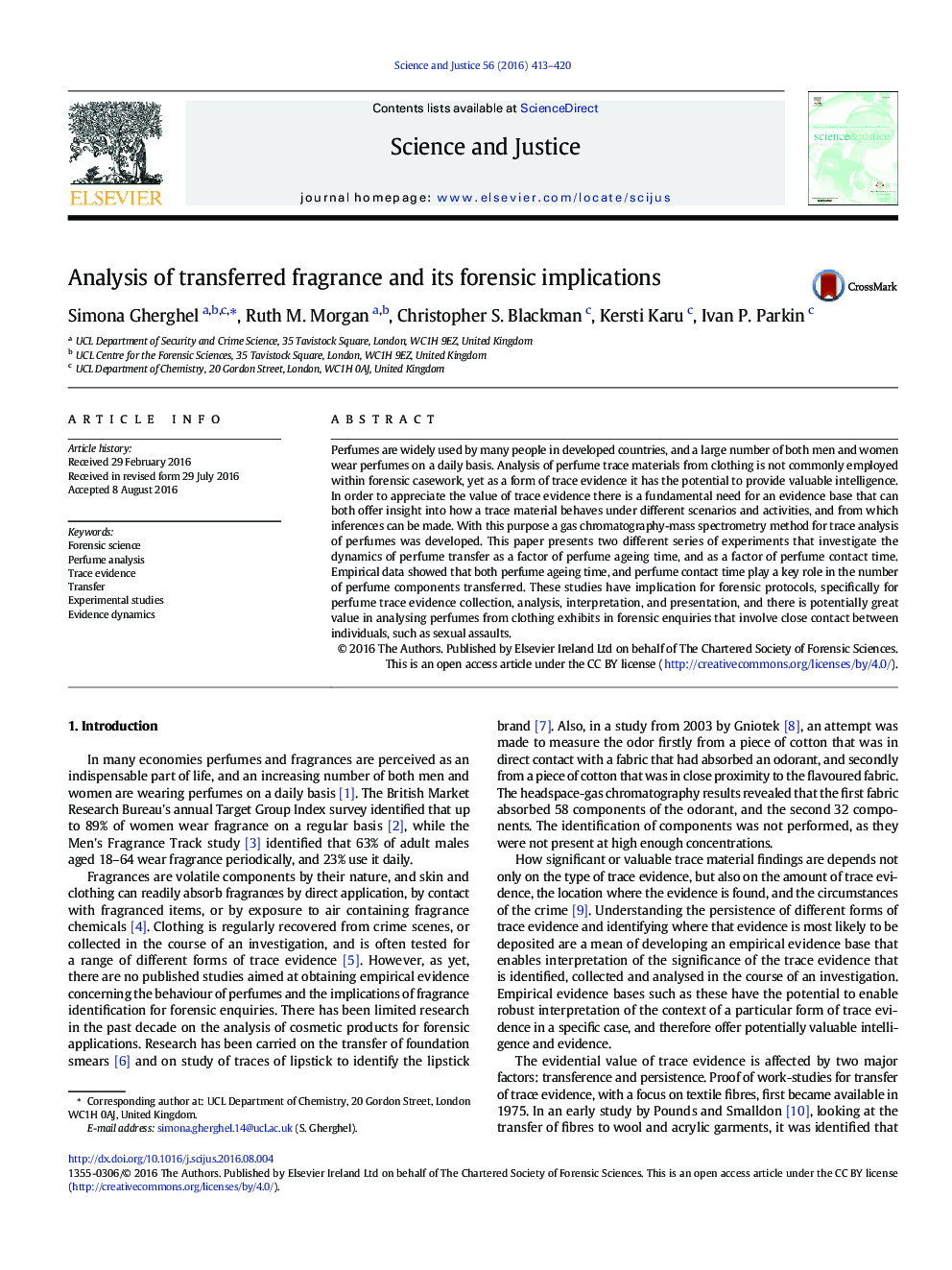| کد مقاله | کد نشریه | سال انتشار | مقاله انگلیسی | نسخه تمام متن |
|---|---|---|---|---|
| 6463306 | 161723 | 2016 | 8 صفحه PDF | دانلود رایگان |
- The potential of fragrance as a form of trace evidence has been demonstrated.
- Studies were carried on the dynamics of perfume transfer between fabrics.
- Two time variables were found to affect the number of perfume components transferred.
- As the perfume ageing time increased, fewer components were transferred.
- As the contact time increased, more components were transferred.
Perfumes are widely used by many people in developed countries, and a large number of both men and women wear perfumes on a daily basis. Analysis of perfume trace materials from clothing is not commonly employed within forensic casework, yet as a form of trace evidence it has the potential to provide valuable intelligence. In order to appreciate the value of trace evidence there is a fundamental need for an evidence base that can both offer insight into how a trace material behaves under different scenarios and activities, and from which inferences can be made. With this purpose a gas chromatography-mass spectrometry method for trace analysis of perfumes was developed. This paper presents two different series of experiments that investigate the dynamics of perfume transfer as a factor of perfume ageing time, and as a factor of perfume contact time. Empirical data showed that both perfume ageing time, and perfume contact time play a key role in the number of perfume components transferred. These studies have implication for forensic protocols, specifically for perfume trace evidence collection, analysis, interpretation, and presentation, and there is potentially great value in analysing perfumes from clothing exhibits in forensic enquiries that involve close contact between individuals, such as sexual assaults.
Journal: Science & Justice - Volume 56, Issue 6, December 2016, Pages 413-420
